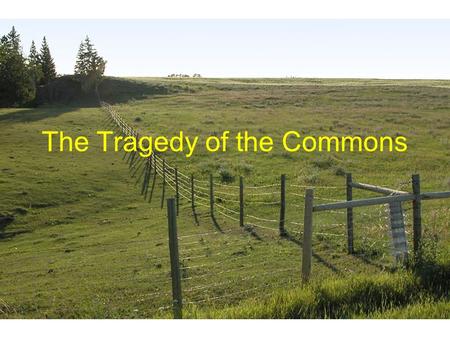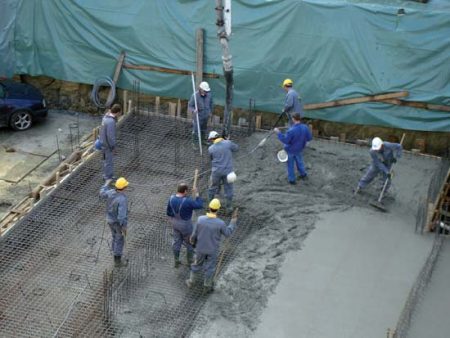May 24, 2017 – In downtown Boston sits a park known as the Boston Common. Established in 1634, it was set aside for common use for the citizens of Boston. Sold to the city by an Anglican minister for the sum of 30 pounds, each homeowner contributed six shillings to its purchase and maintenance. A shepherd, hired by Boston homeowners received two shillings and sixpence per head of cow that grazed upon the Common each year.
The idea of a commons, a place where individual property rights give way to collective needs, goes back to Medieval Europe where under Feudal land practices a section held in common was always allowed to lie fallow for a year. The land wasn’t held by the serfs, but by their lord or the king. Like most of what occurred in the Medieval period, the practices of common appropriation formed a patchwork that varied from domain to domain.
The practice of holding the larger Earth in common is one that comes from First Nations who here in North America approached the environment on very different terms to those who came to the continent from Europe. Canada’s Assembly of First Nations refers to our planet as Mother Earth. They describe their legacy and future as primary caretakers of the water, air, and the fire that are the constituents of Mother Earth. They describe the relationship they have as one of reciprocity, about “give and take.” What First Nations take from the planet, in their view, must be returned to it.
The modern European capitalist view, far different from its Medieval antecedent, is best described by Aristotle, a very ancient Greek, who was quoted as saying, “What is common to the greatest number gets the least amount of care.” Aristotle was trying to make a point about self-interest winning out when humans have to put behaviour in context of the bigger picture. For much of our modern history, Aristotle’s observation have held true. Self-interest, whether individual or corporate, continues to guide our modern Western society when it comes to how we appropriate land, water, and air, our collective commons.
The Tragedy of the Commons
The title above could well describe the current climate change dilemma. The phrase, first coined by Garrett Hardin in an essay he wrote in 1968, described the finite nature of our planet and weighed human activity in the face of Earth’s natural limits. Hardin looked at both outputs and inputs. His primary focus was on unrestrained population growth. But he also talked about pollution as an assault on the commons. Hardin weighed our morality in dealing with the planet and found it wanting. Hence we come to the issue of defending the moral high ground when addressing climate change adaptation and mitigation.
Climate Change Becomes Litigious
I have described recent cases of litigation by different groups in previous postings. In yesterday’s Toronto Star, Alex Ballingall writes a report describing this as a growing phenomenon. He cites an $800 million price tag that the City of Vancouver has put on erecting storm surge barriers to confront rising sea levels brought on by climate change. Mayor Gregory Robertson describes rising sea levels as “not an act of God….This is tied directly to human activity.”
Ballingall describes a 2012 report that puts a dollar value on necessary infrastructure to mitigate climate change and its economic consequences. The cost in 2010 was estimated at $1.2 trillion. The cost by 2030 will be close to $5 trillion.
The result, governments are being taken to court. Lawyers are catching on to climate change inaction by governments and large corporations as a litigable offense. Columbia Law School Sabin Center for Climate Change Law reports climate change cases in increasing numbers. In the United States, the caseload currently stands at 654 and climbing. In Australia, there are 80 cases. In the United Kingdom, 49. None of these cases has yet to deal with climate refugees which will certainly be prevalent in the next wave of litigation.
How far does climate change accountability go? At lunch today I was sitting with my brother and pointed to a building under construction across the street. The bulk of materials used for this forty-plus storey condominium include steel, poured concrete, and concrete block. All of these are carbon intensive. And the shipping of them to the site is equally carbon intensive.
The contribution of this building to global warming both in its construction, let alone operation, is not inconsequential. But would you litigate against the developer for contributing to polluting the atmosphere? Clearly not. But putting a price on the carbon content of the materials and of the transportation to get the materials to the site would serve to potentially change the behaviour of the developers to consider lower carbon content materials and processes. But would you litigate against the developer, the contractors, and the suppliers for contributing to polluting the atmosphere? At present. not.
But would you litigate against the developer for contributing to polluting the atmosphere? Clearly not. But putting a price on the carbon content of the materials and of the transportation to get the materials to the site would serve to potentially change the behaviour of the developers to consider lower carbon content materials and processes. But would you litigate against the developer, the contractors, and the suppliers for contributing to polluting the atmosphere? At present. not.
But by putting a price on the carbon contribution including materials and transportation would serve to potentially change the behaviour of designers, developers and contractors to consider lower carbon content.
Putting a price on carbon content of materials and processes serves society as a form of reciprocity. In the long run, an escalating carbon price would, out of necessity, change the behaviour of developers. suppliers and contractors. They would switch to lower carbon content materials and processes.
Such is the case in the argument for sustainable buildings that act as carbon sinks. In an earlier posting this week I wrote about building construction that uses wood. The developers in three described projects have substituted wood for concrete and steel. Wood is a natural carbon sink (the trees absorb carbon to grow). New techniques are making it possible to use the material as a primary constituent in high-rise construction.
What if the Trump administration jettisons the Paris Climate Agreement?
Would California, a leading climate change mitigation and adaptation jurisdiction within the U.S., consider suing the federal government, or any corporation operating within its boundaries, for not addressing climate change?
In yesterday’s New York Times, Coral Davenport and Adam Nagourney, have written on this very subject. The authors describe a confrontation in the making between the state and the U.S. federal government, a confrontation that is bipartisan with state and federal Democrats and Republicans equally critical of the Trump administration.
As Governor Jerry Brown states, “erasing climate change may take place in Donald Trump’s mind, but nowhere else.”
So will we see a state hauling the federal government before the U.S. Supreme Court? The answer is likely a “yes.”
And if not the state, then citizens’ groups within it, aligned with litigators prepared to argue that governments or corporate entities that act against the common good through polluting the commons, must be held accountable.


















